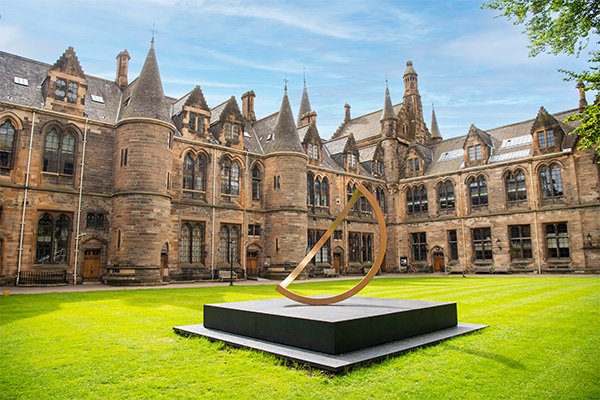A wee day of rational points

About
A one-day conference in rational points supported by an LMS Celebrating New Appointments grant and the School of Mathematics and Statistics at the University of Glasgow.
Date: Wednesday, 29th May 2024.
Location: 311b, Maths and Stats building, University of Glasgow.
Registration
Please fill in the registration form.
Schedule
09:00-09:30: Welcome coffee and pastries
09:30-10:30: Julian Demeio (Bath)
The Grunwald Problem for solvable groupsLet K be a number field. The Grunwald problem for a finite group (scheme) G/K asks what is the closure of the image of H^1(K,G) → ∏_{v ∈ M_K} H^1(K_v,G). For a general G, there is a Brauer–Manin obstruction to the problem, and this is conjectured to be the only one. In 2017, Harpaz and Wittenberg introduced a technique that managed to give a positive answer (BMO is the only one) for supersolvable groups. I will present a new fibration theorem over quasi-trivial tori that, combined with the approach of Harpaz and Wittenberg, gives a positive answer for all solvable groups.
Partial results were also obtained independently by Harpaz and Wittenberg.
11:00-12:00: Rachel Newton (KCL)
Transcendental Brauer–Manin obstructions on singular K3 surfacesLet E and E′ be elliptic curves over Q with complex multiplication by the ring of integers of an imaginary quadratic field K and let Y = Kum(E×E′) be the minimal desingularisation of the quotient of E×E′ by the action of −1. We study the Brauer groups of such surfaces Y and use them to furnish new examples of transcendental Brauer–Manin obstructions to weak approximation. This is joint work with Mohamed Alaa Tawfik.
12:00-13:15: Lunch (provided)
13:15-14:15: Damián Gvirtz-Chen (Glasgow)
Non-thin rational points for elliptic K3 surfacesWe prove that elliptic K3 surfaces over a number field which admit a second elliptic fibration satisfy the potential Hilbert property. Equivalently, the set of their rational points is not thin after a finite extension of the base field. Joint work with G. Mezzedimi.
14:30-15:30: Samir Siksek (Warwick)
Galois groups of low degree points on curvesLow degree points on curves have been subject of intense study for several decades, but little attention has been paid to the Galois groups of those points. In this talk we recall primitive group actions, and focus on low degree points whose Galois group is primitive. We shall see that such points are relatively rare, and that they interfere with each other. This talk is based on joint work with Maleeha Khawaja.
16:00-17:00: Peter Koymans (ETH) - in room 110
Averages of class numbersIn the 1950s Erdos developed a method to give upper and lower bounds of the correct order of magnitude for d(P(n)) where d is the divisor function and P is a polynomial. This was greatly extended by Nair and Tenenbaum to a wide class of multiplicative functions and sequences.
In a different direction, Heath-Brown and Fouvry--Kluners used character sum techniques to respectively obtain the average size of the 2-Selmer group in the quadratic twist family dy^2 = x^3 - x and the average size of the 4-torsion of Q(sqrt(d)).
We combine these two techniques to get the order of magnitude for the average size of the 3 * 2^k-torsion for every k >= 1 and bounded ranks (on average) for the family P(t) y^2 = x^3 - x. In this talk, we will explain the aforementioned techniques and how we are able to combine them. This is joint work with Carlo Pagano and Efthymios Sofos.
Those who are staying overnight or leaving late are welcome to join for pub and dinner afterwards. The dinner will be subsidised depending on participant numbers.